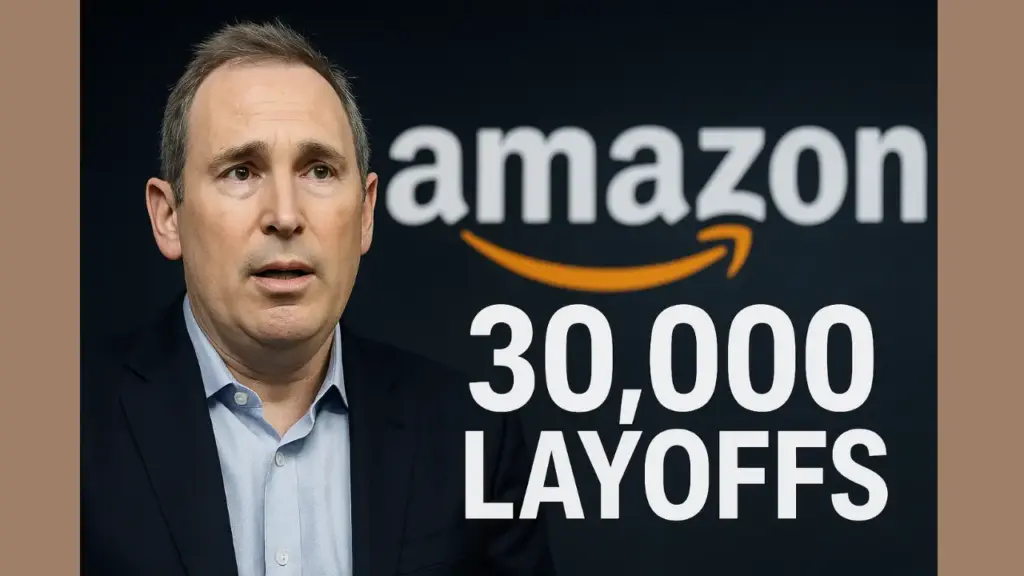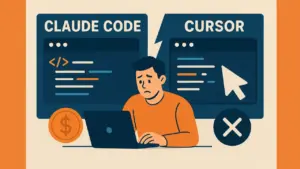1. Introduction – The “AI Efficiency” Cover Story
Amazon has once again made headlines — but not for innovation or record sales. This time, it’s for the largest corporate layoff in the company’s history. CEO Andy Jassy announced 30,000 job cuts, with 14,000 already executed and more planned in the coming months.
The official explanation? AI efficiency.
According to Amazon, artificial intelligence is making teams leaner and operations faster. But that story doesn’t quite add up. While Amazon is trimming entire departments, other tech giants like Microsoft and Google are hiring thousands of AI engineers. If AI truly makes companies stronger, why is Amazon shrinking?
Something doesn’t fit — and it’s time to uncover what’s really happening behind the “AI excuse.”
2. Amazon’s Layoff Timeline: 14K Gone, More to Come
Let’s start with the facts.
Amazon’s layoffs began quietly in late 2024 and have now reached 14,000 employees, mainly in sales, HR, and corporate management. The company says the total will reach 30,000 before the restructuring ends — making this the largest layoff in its history.
Departments hit hardest include Amazon Studios, AWS support teams, advertising, and even logistics operations. While public statements suggest this is part of a modernization plan, insiders describe it as a cost-cutting wave driven by profit pressure.
This isn’t the first time Amazon has restructured, but this scale is different. It shows a deeper issue in leadership strategy — one that goes beyond automation or AI integration.
3. The AI Blame Game: Convenient but Misleading
Blaming AI for layoffs sounds futuristic — and safe. It allows companies to appear forward-thinking, even while cutting costs. Andy Jassy’s reasoning fits that narrative perfectly: “AI efficiency allows us to do more with fewer people.”
But here’s the truth: most laid-off employees had nothing to do with AI or automation.
These were human resource specialists, mid-level managers, and marketing professionals — roles far removed from AI workflows. If AI were truly responsible, we would see developers or machine learning engineers being replaced by automation tools. That’s not what’s happening.
Instead, we see other tech giants expanding AI divisions:
- Google is hiring to accelerate Gemini AI.
- Microsoft is integrating Copilot across its ecosystem.
- Meta is building AI-driven ad models and VR tools.
So while competitors are adding AI talent, Amazon is reducing headcount. Clearly, this isn’t about technology replacing people — it’s about financial optics and leadership strategy.
4. AWS Growth Is Slowing – The Real Red Flag
To understand the layoffs, follow the money.
AWS (Amazon Web Services) has long been Amazon’s golden goose, generating most of the company’s profits. But recently, AWS growth has slowed — even as AI workloads explode worldwide.
This slowdown is alarming. Competitors like Microsoft Azure and Google Cloud are seeing faster growth thanks to AI partnerships and GPU-backed data centers. Meanwhile, AWS seems to be lagging behind in AI adoption, which is ironic given its infrastructure dominance.
Amazon’s internal AI tools, like Bedrock and CodeWhisperer, haven’t achieved the same traction as OpenAI or Anthropic integrations. That means less visibility and slower customer growth — and ultimately, pressure on margins.
To investors, this looks like inefficiency. To leadership, it’s a reason to cut costs. And layoffs become the easiest short-term fix.
5. Shrinking to Profitability: The Real Corporate Play
Amazon’s leadership isn’t being fully transparent. These layoffs aren’t driven by innovation — they’re driven by profitability goals.
After years of aggressive hiring during the pandemic boom, Amazon found itself with bloated teams and lower margins. Now, Andy Jassy is trying to “shrink to grow”, cutting layers of management to make the company look more efficient to Wall Street.
But here’s where the Fractional CTO perspective helps explain the deeper mistake.
A Fractional CTO, who helps startups and enterprises balance innovation with operational efficiency, would never recommend cutting your innovation teams during a technological revolution. AI isn’t a threat — it’s a tool for reinvention.
By removing strategic roles and halting AI-driven development in key areas, Amazon risks falling behind competitors who are doubling down on technology. Short-term cost savings may please investors, but long-term stagnation hurts the company’s future.
In other words, Amazon isn’t becoming more efficient — it’s becoming less innovative.
6. The Human Impact: Morale, Culture, and Trust
Behind every layoff announcement are real people — and real consequences.
Reports from within Amazon describe low morale, uncertainty, and a growing feeling of disconnection between leadership and employees. Many workers learned about layoffs through email, with little explanation or transition support.
This approach damages trust, not just among those who left, but among those who remain. Employees who survive layoffs often feel demoralized and insecure, leading to reduced creativity and productivity.
Amazon’s once-strong culture of innovation — “work hard, have fun, make history” — feels like it’s fading. Now, the message seems closer to “cut costs, work harder, survive.”
For a company that built its empire on customer obsession and long-term vision, this shift is troubling. Culture isn’t just a perk — it’s a competitive advantage. And once it’s broken, it’s hard to rebuild.
7. The Bigger Picture: What It Means for the Tech Industry
Amazon’s layoffs are a symptom of a larger trend — one where companies use AI as a scapegoat for financial mismanagement.
Across the industry, executives are discovering that AI makes a perfect excuse. It sounds advanced and futuristic, yet conveniently hides leadership failures. “AI made us do it” has become the new “market conditions changed.”
But here’s the reality: AI isn’t destroying jobs — it’s transforming them. Skilled professionals are shifting into new roles where human judgment meets AI capability.
For developers, marketers, and data professionals, the future lies in learning to work with AI tools, not fearing them. For companies, the challenge is to adopt AI strategically, not use it as a shield for budget cuts.
In this new landscape, leadership transparency matters more than ever. The organizations that balance human creativity with AI efficiency will define the next era of innovation.

8. Conclusion – The Truth Amazon Doesn’t Want You to See
Amazon’s layoffs aren’t proof that AI is replacing people. They’re proof that leadership decisions are being hidden behind AI headlines.
While Andy Jassy blames automation, the deeper issue is a strategic retreat disguised as innovation. Instead of investing in AI leadership or empowering teams with new technology, Amazon is cutting its way toward profitability.
This may satisfy shareholders today, but it jeopardizes the company’s future tomorrow. True innovation doesn’t come from downsizing — it comes from reimagining how people and AI can work together.
At StartupHakk, we believe transparency, adaptability, and human creativity will always outshine corporate excuses. Because AI isn’t here to take your job — it’s here to amplify what’s possible when leadership dares to think beyond cost-cutting.




